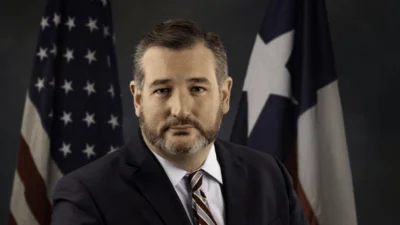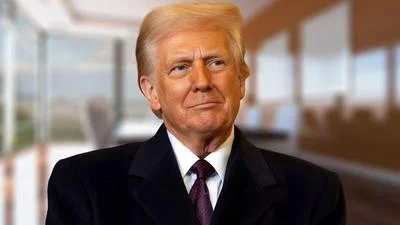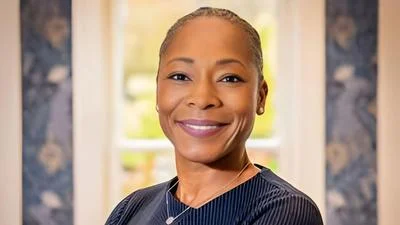The Congressional Record is a unique source of public documentation. It started in 1873, documenting nearly all the major and minor policies being discussed and debated.
“PAUL CHARRON ON CHILD LABOR” mentioning the U.S. Dept of Labor was published in the Senate section on pages S4399-S4400 on May 13, 1997.
The publication is reproduced in full below:
PAUL CHARRON ON CHILD LABOR
Mr. HARKIN. Mr. President, on April 17, 1997, a momentous occasion took place at the White House when a group of apparel manufacturers, importers, labor officials, and President Clinton announced their actions to reduce the incidence of abusive child labor in the manufacturing of imported articles into the United States. As one who has been working on this issue for many years, I am pleased with the progress that is being made, although I recognize we have a long way to go. Most importantly, we need leaders in the apparel industry who are willing to take that step forward and work to include all manufacturers and importers in this effort to ban abusive and exploitative child labor. In the recent past, many apparel manufacturers have resisted this effort, supposedly in the name of
``free trade,'' but I suspect there was probably another reason. On the other hand, there have been manufacturers and importers, who have stepped forward to courageously take the different course and that is to do everything they can to ensure that their products are not made with exploitative child labor.
One such person is Mr. Paul Charron, the chief executive officer of the Liz Claiborne Corp. He has been in the forefront of the fight to ban the use of exploitative child labor in the manufacturing of wearing apparel. Mr. Charron gave remarks at the White House that day, which I found to be most encouraging. His comments, indeed, echo my feelings, and I know the feelings of President Clinton when he said that ensuring human rights is the right thing to do, and it is the smart thing to do. Good working conditions are productive working conditions. He is absolutely right, and I want to applaud Mr. Charron and thank him for his courageous stance and leadership on this issue. I would also like to encourage the participants of the White House Apparel Industry Partnership to take the next step and adopt a labeling system giving consumers the information they need and companies the recognition they deserve.
At this point, I submit Mr. Charron's remarks into the Record, and I urge my colleagues and their staffs to review his remarks.
The remarks follow:
Remarks for the White House Apparel Industry Partnership: Paul R.
Charron, April 14, 1997
Thank you, Linda.
And thank you, Mr. President, for having the foresight to recognize that companies could work together with labor, human rights and consumer organizations towards the common goal of improving labor conditions around the world.
But let's not forget the contributions of this administration, particularly the Department of Labor and former Labor Secretary Robert Reich. I also want to acknowledge the tireless efforts of Maria Echaveste and Gene Sperling.
Furthermore, I would like to express my deep appreciation to all those from the industry, labor, human rights, consumer groups who contributed to this effort. And, of course, I would like to thank Roberta Karp, Liz Claiborne's general counsel, who co-chaired the task force.
The standards and processes developed by the Apparel Industry Partnership are groundbreaking. Together we have built a framework to more credibly address a serious and complex problem.
But the success of the Partnership's framework for improving working conditions depends upon the industry's ability to recruit its peers.
We must be realists. We must be problem solvers. And our first challenge is this: persuading our colleagues in the apparel and footwear industries--colleagues who are not represented here today--to join the fight.
In short, we have come here not to announce victory, but to proclaim a new challenge. And that is to make this a truly industry-wide effort. There is no other way.
The skeptics may ask--why do this? The answer is simple: it's good business. Some in the industry may think the companies standing here are taking an unnecessary risk; they may wonder how we can afford to make this commitment.
I would ask them in return--how can we afford not to?
Ensuring human rights is the right thing to do, and it is the smart thing to do. Good working conditions are productive working conditions.
Let me emphasize that we are faced with a unique opportunity to make further progress, and, again, our goal is to make this into an unprecedented industry-wide effort. This is only the start--the truly great accomplishments are yet to come.
Please join us to help this Partnership fulfill its potential.
And now, it is my great honor to introduce the President of the United States. Mr. President. . . .
THE 50TH ANNIVERSARY OF THE TRANSISTOR
Mr. LAUTENBERG. Mr. President, I rise today to mark one of those rare discoveries which not only make history, but actually change history. On December 16, 1947, three Bell Laboratories scientists, Nobel Prize winners John Bardeen, Walter Brattain and William Shockley, working in Murray Hill, NJ, successfully operated the world's first transistor. The transistor allows the flow of electrons through solid materials to be controlled without requiring any moving parts.
Mr. President, I'm not a scientist, so I don't completely understand the technology that makes this tiny device work. But I do understand that, without it, an amazing array of products which have revolutionized our lives could simply not work. In fact, the transistor's impact on microelectronics, computers, telecommunications, and so much more reminds me of the words of Ralph Waldo Emerson, ``The creation of a thousand forests is in one acorn.'' And the forests of products which have sprung from the transistor is indeed dazzling.
Mr. President, not only is the transistor practically ubiquitous in our society, there is neither an individual nor an industry that has not benefited from this device. It has helped us advance the study of biology and medicine, permitting us to understand and heal the human body in ways that our ancestors could never even have imagined. It has altered our sense of community by permitting us to negate the effects of both time and distance through the development of worldwide communication networks. By doing so, the transistor changed the way we learn by instantly placing knowledge at our fingertips. And it has allowed us to explore the depths of the ocean, walk on the moon, and chart the solar system and the invisible domains of the universe. Obviously, the transistor not only revolutionized our lives, it has helped to lengthen our lives, enrich our lives, and provide our lives with greater meaning.
Mr. President, the tradition and tenacity of Bell Laboratories lives on in its linear descendent, Lucent Technologies. The men and women of Lucent continue to make innovative communications products using solid state technologies that are an outgrowth of the transistor's development. I salute their work, and as the direct heirs of Bell Laboratories, I congratulate them on the 50th anniversary of the transistor.
____________________








